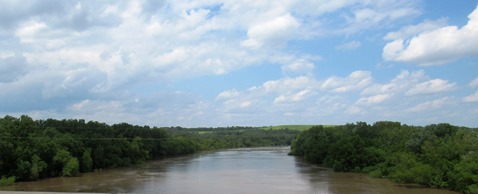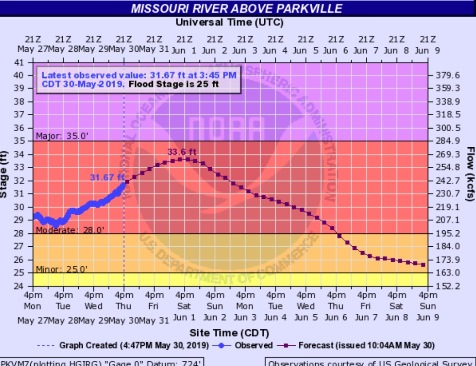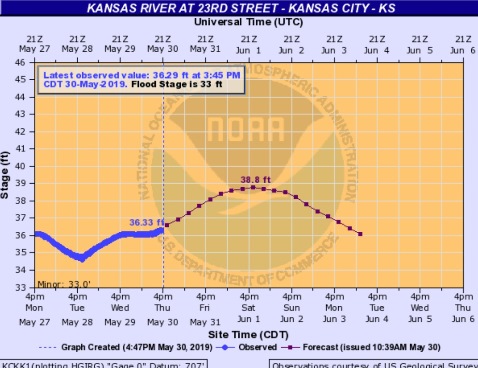The Unified Government Commission on Thursday repealed a ban on pit bulls that has been in place in Kansas City, Kansas, for almost 30 years.
At the lengthy meeting Thursday night in a packed commission room at City Hall, commissioners voted 6-3 to lift the ban on pit bulls. Voting no were Commissioners Gayle Townsend, Tom Burroughs and Jim Walters. Voting in favor of the repeal were Commissioners Jane Philbrook, Melissa Bynum, Mike Kane, Angela Markley, Brian McKiernan and Ann Murguia.
The effort to lift the ban was led by Commissioners Jane Philbrook and Melissa Bynum.
Breed-specific bans have been on the way out in recent years around the country, and the UG has lost some grant funding because it still had one, according to Commissioner Philbrook. In recent years, pit bull bans have been repealed in Bonner Springs, Edwardsville, Shawnee, Roeland Park, Tonganoxie and Lansing, all without any increase in dog bites, she said.
Philbrook said 24 percent of the UG’s animal services budget currently is spent on breed-specific services. Animal control officers are sent out to pick up pit bull dogs that may not be exhibiting dangerous behavior, and that takes away from the time they have to spend on dogs that are exhibiting dangerous behavior.
A UG survey taken in 2016 found that about 82 percent of those surveyed wanted to repeal the pit bull ban, she said.
She also discussed some of the challenges of the animal control department here, such as understaffing and not enough shelter space.
Commissioner Bynum said the pit bull ban could be repealed because the UG has already put a dangerous dog ordinance in place in 2014. That ordinance would cover any dogs’ bad behavior, such as biting.
The commission heard from several residents, including relatives of Jimmie Mae McConnell, who was mauled by a neighbor’s pit bull and died. McConnell was working in her own fenced-in backyard garden in July 2006 in Kansas City, Kansas, when she was attacked.
Theresa McConnell, a relative of the victim, said pit bulls were created by God to be out in the fields with animals and not necessarily to be around people. At any given time, regardless of how trained the dog is or how much time is spent with it, the pit bull dog could attack, she said.
“We are in support of upholding the ban because of the fear that other individuals will have the same situation happen to them as happened to my sister-in-law,” said James McConnell, brother-in-law of the victim. He said pit bulls could turn in an instant on children, and he also said children were afraid to get off their school buses for fear of stray dogs, some of which are pit bulls.
The Rev. Jimmie Banks spoke at length to support the pit bull ban. He described the vicious attack on Mrs. McConnell by a pit bull. The owner of the dog received a prison sentence for involuntary manslaughter. Banks said the pit bull is a breed that attacks with the ability to kill, including killing the members of the family that raised them. He cited data that stated pit bulls were responsible for the majority of the deaths caused by dogs from 2005 to 2018.
Jennifer Stewart of the UG’s animal control said the shelter currently has 35 percent pit bulls or predominantly mixed pit bulls. The pit bulls stay longer in the shelter than other dogs because it is harder to find them homes, as they have to go outside Kansas City, Kansas, to find homes, she noted.
Darren Dillard, a resident, said pit bulls were just like any other dogs and should be treated as individuals. He said any dog could be dangerous, and the UG needs to focus on dangerous dogs, not just pit bulls.
Kate Fields, director of the Humane Society of Greater Kansas City, said they supported the repeal of the pit bull ban. Currently the Humane Society shelter has 45 percent pit bull mixes, and the dogs can’t be adopted in their own communities.
“This is an archaic and outdated rule and it needs to change,” Fields said.
Commissioner Gayle Townsend supported the ban on pit bulls. She said it was an essential tool, not flawless, but effective in helping to maintain effectiveness in public safety.
“Because of unique peculiarities to that species, I do believe the breed-specific ban should stay in effect,” she said.
She said she received a letter from a pediatric surgeon out of state who said injuries from pit bulls’ bites were worse than others. She also noted that the average cost of a dog bite was $33,230 in health care costs.
“We don’t want to put the public at risk,” Commissioner Townsend said. “If we repeal the ban, there’s potentially more harm to the public at large than if we leave it in place.”
Referring to a comment that the community was not complying with the pit bull ban, Commissioner Tom Burroughs said, “I don’t believe we rescind an ordinance for noncompliance or limited resources to make sure we comply with an ordinance. I’m not sure that’s a reason to do away with an ordinance.”
He said it was up to the commission to provide the resources that are needed. He said he would have more comfort if any dangerous animal were taken off the streets.
Commissioner Mike Kane said he had always opposed a pit bull ban, and this decision is a very difficult one.
“We’re fighting as a community because somebody looks this way or that way,” Kane said. “It’s not the dog itself, it’s the person who has the dog.”
Several other persons spoke at this meeting; to view a video of it visit https://www.youtube.com/watch?v=0ylNEWKVNis .
















